#classical saxophonist
Text
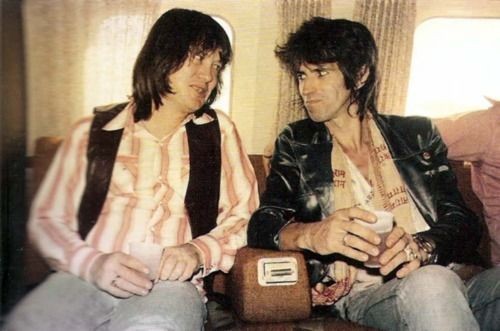
Bobby Keys and Keith Richards, 1979. They both share their birthdays on December 18th, just a few hours apart.
#keith richards#bobby keys#the rolling stones#old rockstar#classic rock#70s rock#70s music#70s era#rocknroll#rock n roll#rock#saxophonist#saxophone
10 notes
·
View notes
Note
Two completely unrelated JRPGs used the same piece of classical music
God, I'd absolutely forgotten that Gymnopedie was use in Innocent Sin. I feel like my brain autoblocks anything else but the Aria of the Soul playing in the Velvet Room.
I do remember this in Earthbound, but mostly because it's like ... the only piece of piano music I ever learned to play and got excited about that.
#I have zero piano training#I can read music but I'm a classically trained Saxophonist#which meant I learned to play Oboe parts on the Alto Sax since they're the only E Flat instruments in an orchestra#and then spent my last two years in high school mcstruggling to do jazz#I can play it fine I just can't improvise to save my life#earthbound#persona 2
3 notes
·
View notes
Text
Tenor Madness: The Historic Confluence of Sonny Rollins and John Coltrane
Introduction:
In the vast realm of jazz history, certain moments stand out as defining milestones. One such moment occurred during the recording session for the song “Tenor Madness,” where two titans of the tenor saxophone, Sonny Rollins and John Coltrane, came together to create a legendary musical encounter. This rare meeting of musical giants produced a captivating and influential recording…

View On WordPress
#Classic Albums#Jazz History#Jazz Saxophonists#John Coltrane#Paul Chambers#Philly Joe Jones#Red Garland#Sonny Rollins#Tenor Madness
2 notes
·
View notes
Text
Here’s the opening to Piazzollas Histoire du Tango III. Nightclub 1960. I blotted myself out because I talked a lot about how pieces I like make me hard so like people who can’t already tell it’s me don’t need to have my face attached to that.
This piece just slaps ass. It was originally for flute and guitar but was adapted for sax and piano. In most movements the flute version is just as good but with a different colour, but in nightclub 1960 it can’t compete with the vigour of the soprano and feels limp in comparison
Here’s the Sugawa recording of II and III
Movement II is one of the most beautiful pieces in the saxophone repertoire, punching in the big leagues alongside Creston Sonata II for me. It carries melancholy, despair, anger, but also hopefulness and this very sweet quality at the centre of it that truly pulls at my heartstrings. Movement III is just a plain ol’ banger. I’m a slut for pieces that use switches to compound meters for dramatic effect and this one does it well. It’s also a workout for skill with single tonguing and is so satisfying to hear and play cleanly.
#classical saxophone#classical music#tango#live sax love sax#find classical saxophonists and give them money#Spotify
4 notes
·
View notes
Text
i love music. it makes life so beautiful. a life without music is an insult to the human mind
(recently i saw a video of a man playing something very strongly on a piano and i thought about it longer than i should’ve)

#classical music#music#philosophy#piano#pianist#saxophonist#saxophone#free jazz#lana del rey#hip hop#kpop music#soul music
0 notes
Text
Too much tequila (1.5 standards) after 12hr day at music school -> "I should learn to play some jazz"
#im only a classical saxophonist its very lame and a little sad#but jazz majors are some of the FUCKING RUDEST MOST UNFRIENDLY AND ALOOF MOTHERFUCKERS IVE EVER ME IN MY LIFE. MUSIC IS ABOUT FUCKING#COMMUNITY. PLAYIG TOGETHER. COLLECTIVE EXPERIENCE. YOUD THINK FUCKING JAZZ MUSICIANS WPULD KNOW THIS. BUT NOPE!#legitimately classical musicians are sooooo much more accepting and less gatekeep-y.#the exception is trans girls/ genderqueer ppl. some of the sickest MFers ive met tbh. excellent vibes love them. also most bass players#(biased. 90% of bass players are hot af. i am very attracted to bass players on average)#yeag im a little drunk on 1.5 standards and yea im hoing to bed now
0 notes
Text
"The Shape of Jazz to Come" - Saxophonist and Bandleader Ornette Coleman
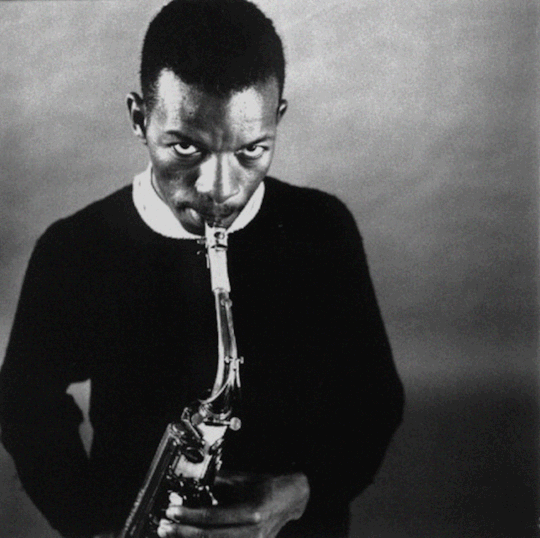
"The Shape of Jazz to Come" is a 1959 album by saxophonist and bandleader Ornette Coleman, his first released on the Atlantic label. It was Coleman's first album to feature his harmolodic concept, which he wrote about in his 1961 book Free Jazz: Ornette Coleman and the Harmolodic Ideal.
The album was controversial upon its release, due in part to Coleman's use of atonality and dissonance. These elements, combined with his use of extended improvisation, made the album difficult for many jazz critics and listeners to appreciate. However, it has since been recognized as one of the most important and influential jazz albums of all time, and helped to usher in a new era of jazz.
In his review for AllMusic, Thom Jurek writes: "This is one of the most important jazz recordings ever made, the date that signaled the arrival of the avant-garde in jazz... The recording is as provocative and challenging now as it was upon its release." Jurek goes on to say that the album "changed the course of jazz history," and that it is "essential for any jazz collection."
Similarly, in his review for The Guardian, John Fordham writes: " Coleman's game-changing 1959 album The Shape of Jazz to Come announced the arrival of free jazz – and still sounds like the future." Fordham goes on to say that the album is "a set of ideas and approaches rather than a suite of conventional tunes," and that it "remains one of jazz's most radical statements."
It is clear that "The Shape of Jazz to Come" is an important and influential album, and one that continues to challenge and provoke listeners. It is an essential album for any jazz fan, and a reminder of the power of jazz to push boundaries and innovate.
https://music.youtube.com/playlist?list=OLAK5uy_l4aerHoWJyp3Y903OySycwulvmmX7wl9Y
#Ornette Coleman#jazz#jazz music#jazzmusic#classical#jazz history#music lovers#musician#musicislife#saxophone#saxophonist
0 notes
Note
Okay hear me out- this might be a little stupid but I can’t get it off my mind- Coriolanus snow instead of Lucy gray and the covey, reader with a jazz band??? I really love jazz I just want to know his thoughts on all the different instruments and jazz singer reader! TYSM for at least listening! 🩷
Jazz || PeaceKeeper Coriolanus Snow x Female District! Jazz singer Reader
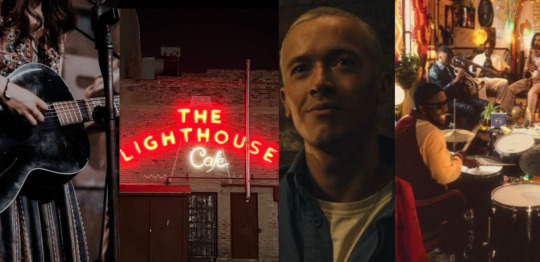
Summary: After coming Back from Winning The 10th Hunger games, One day while you and your Band Are playing You spot the same White haired Boy. Coriolanus never heard of Jazz before since the Capitol Is all Classic music, so You introduce him to your fellow band mates.
—————————-
You loved to sing With your band. They were like your family.
You missed them the Entire time you were in the arena. Wishing you would be back with them. But with the help of Coriolanus snow getting you back to your family like he promised.
Now in the Train heading back to Twelve Feeling miserable of how you didn’t thank him.
Hopefully you two would meet again.
———————
“Did you guys miss me?!” You spoke in the Microphone on stage.
A bunch of Yes’s were shouting all over the Club.
“Well I sure missed you! But I assure you I am back!” You started to smile
“Well how bout a song huh?” You started to ajust your Mic.
You turned back to your band Nodding at them to know your ready.
———————
As you and Your band Are up stage Performing for the audience Enjoying yourselfs. While in the middle of Singing You make eye contact with those same Blue eyes you once Knew. You almost stopped singing but continued. You smiled as you started swaying.
Now done with your Music just Taking a break. “Hey guys I’ll be right back.” Putting the mic back up on its stand. They all nodded and smiled as they headed to the bar.
Making your way through the crowd saying Excuse me here and there seeing if you could spot those same Blue eyes again. Once you spot him standing in the same place you saw him, you started to walk over.
“Hey.” You smiled as him. “Hey, You were really good up there. Never heard of that type of Music.” He asked smiling. You looked shocked. “You’ve never heard of jazz before?” You teased him. “No, back in the Capitol it’s all Classic you know.” He nodded leaning against the wall.
“Wow. Well I have to meet you to My band mates. Come.” You motioned with your hands signaling him to follow. You made sure he was following you through the crowd heading backstage where your band were just sitting and chatting around.
You and Coriolanus walked up to them as you introduced them to him. “Hey guys this Is Coriolanus. He was my mentor back in the capitol, He helped me win the games and come back.” They all looked at Corio.
“Thank you for helping her. We wouldn’t know what we would do without her. She’s like our little sister.” Your Band mate Bennie walked up to Corio as he Nodded at him. “Of course.” Coriolanus nodded back.
“Corio let me introduce them to you.” You patted his back. “Well here’s Bennie, He’s our Saxophonist. Then we have Finch Which who plays our Trumpet. Here’s Charlie who’s our drummer. Miles is our bassists, Our Guitarist is Django, and Lastly Calloway is our pianist. And I’m the voice of course.” You grinned as all you band mates waved and greeted Corio.
“Nice to meet you all. I do enjoy your Music very much.” Corio grinned. “Yeah, thanks man but we should probably head back on stage now guys.” Miles pointed to the stage. They all started to head on stage setting up. You turned around to Coriolanus. “It was nice seeing you again Corio, and thank you for everything,” you started to Tear up.
“No,No I should be thanking you Y/n, You saved me in thatBombing. I owe you my life. Just don’t forget that. I promised you I would bring you back to your family.” Coriolanus grabbed your hands. With his other hand he wiped the Tears falling from your eyes.
“Thank you Corio.” You weakly smiled. The silence broke as You heard in the background of jazz music started to play. “I think I should go now.” You pointed back to the stage while wiping your tears. “Yeah. I’ll be watching you out there.” Corio grinned. You smiled at him as you walked back on stage.
_________________
#tom blyth#coriolanus snow#billy the kid#billy the kid x reader#coriolanus snow x reader#tom blyth x reader
97 notes
·
View notes
Text
youtube
Oliver Nelson - Stolen Moments
As Oliver Nelson is known primarily as a big band leader and arranger, he is lesser known as a saxophonist and organizer of small ensembles. Blues and the Abstract Truth is his triumph as a musician for the aspects of not only defining the sound of an era with his all-time classic “Stolen Moments,” but on this recording, assembling one of the most potent modern jazz sextets ever. Lead trumpeter Freddie Hubbard is at his peak of performance, while alto saxophonists Nelson and Eric Dolphy (Nelson doubling on tenor) team to form an unlikely union that was simmered to perfection. Bill Evans (piano), Paul Chambers (bass), and Roy Haynes (drums) can do no wrong as a rhythm section. “Stolen Moments” really needs no comments, as its undisputable beauty shines through in a three-part horn harmony fronting Hubbard’s lead melody. It’s a thing of beauty that is more timeless as the years pass.
35 notes
·
View notes
Text

Spiritual jazz (or astral jazz)[1] is a sub-genre of jazz that originated in the United States during the 1960s. The genre is hard to characterize musically but draws from free, avant-garde and modal jazz and thematically focuses on transcendence and spirituality. John Coltrane's 1965 album A Love Supreme is considered landmark in the genre.

Origins
Pharoah Sanders in 1981.
Critics usually associate spiritual jazz with the 1960s but the beginnings of the genre can be traced to the 1940s and 1950s in works such as Black, Brown and Beige by Duke Ellington, Zodiac Suite by Mary Lou Williams, and Jazz at the Vespers by George Lewis.
During the 1960s in the United States, the civil rights movement was occurring, causing societal change and political movements. As a result, African-American people gained more freedom to celebrate their culture and to express themselves religiously. This led to a desire to push the conventions of jazz, with some artists choosing to search for transcendence and spirituality in their music.
John Coltrane's 1965 album A Love Supreme is generally considered the genesis of spiritual jazz though Coltrane can be heard developing the sound on the song "Spiritual" recorded four years earlier. Treblezine wrote "Spiritual jazz begins, essentially, with John Coltrane," while Pitchfork wrote "This musical exploration [of spirituality] was epitomized by tenor saxophonist John Coltrane". A Love Supreme and other works by John Coltrane inspired other jazz musicians to create music searching for transcendence. For example, Pharoah Sanders and Don Cherry were considered to have taken inspiration from Coltrane's spiritual works.
After John Coltrane's death in 1967, his wife Alice Coltrane and Sanders—both who had previously played with Coltrane—were some of the first to continue the sound of the genre. Coltrane's 1971 album Journey in Satchidananda combined spiritual jazz with influences from Hindustani classical music, after her journey into spirituality with help from Swami Satchidananda. Journey in Satchidananda used ragas, harps, sitars, and ouds to achieve its sound. Pharoah Sanders took inspiration from Arabic, Indian, and Afro-Cuban music to create early spiritual jazz albums, including Tauhid (1967) and Karma

#african#afrakan#kemetic dreams#africans#brownskin#afrakans#brown skin#african culture#afrakan spirituality#jazz spirituality#spiritual jazz#afro cuban music#pharoah sanders#tauhid#journey in satchidananda#ragas#harps#sitars#ouds#Kamasi Washington#alice coltrane#duke ellington#miles davis#african music
45 notes
·
View notes
Text

Dexter Gordon – Landslide
Landslide is an album by American jazz saxophonist Dexter Gordon featuring recordings from 1961 and 1962 which was first released on the Blue Note label in 1980 as part of the Blue Note Classics series.
Dexter Gordon – tenor saxophone
Dave Burns , Tommy Turrentine – trumpet
Sonny Clark , Kenny Drew , Sir Charles Thompson – piano
Ron Carter , Paul Chambers , Al Lucas – bass
Willie Bobo , Philly Joe Jones – drums
10 notes
·
View notes
Text

John Bulloch Souter - The Breakdown (1926)
The Breakdown is a strikingly accomplished painting. Yet it was the subject that caused controversy, as the painting depicts a black saxophonist, sitting on a shattered classical statue of Minerva, the goddess of music, while a naked white woman dances to his music. The woman appears to move as though in a trance, totally abandoning herself to the music, and her discarded clothing and shoes are visible in the far corner of the composition. Within days of its exhibition, the British Colonial office contacted the Royal Academy to request the removal of the picture for 'reasons of state, not art' and 'in the interest of the empire.'
Souter claimed that his painting was intended to 'to illustrate the tendency nowadays for Jazz influence to permeate our daily lives,' and this was true, jazz was beginning to filter through into wider cultural life and in many circles the radical change this represented, towards freedom and a breaking down of strict social norms, was met with celebration and enthusiasm. Yet, at the same time, the British Empire, and the wider racism it represented, were obviously felt to be under threat, and the incident was featured in news stories as far as the U.S.A., India and South Africa and records made of society figures making comments such as, 'it would make ruling our natives difficult.'
As cultural researcher George McKay explains, the idea of Jazz had become at this time a catch-all for wider concerns about new social freedoms in the post-war era, as well as the perceived instability of the empire; everything felt to be 'disruptive, chaotic and dangerous,' could be located within this scene, and thus read either positively, or negatively, into the picture. We can even read Souter's title as part of the dichotomy around the reception of jazz; on one hand the freedom it represented, but on the other the suspicions around its subversive nature. The very term 'breakdown' could be referring to a musical concept, or in a wider sense, the breakdown of the established order.
Most surprisingly, some of the British music establishment reacted strikingly negatively, the editor of Melody Maker, spoke out on the picture on behalf of the whole music scene, claiming 'We jazz musicians … protest against, and repudiate the juxtaposition of an undraped white girl with a black man,' the picture represents a 'perversive danger to the community and the best thing that could happen to it is to have it … burnt!' In fact, Souter did destroy the original painting following the outcry, but kept his original drawings and studies. The subject and painting obviously remained important to him, as much later in his career, he painted a new version, which he dated 1926-62, acknowledging the time that had passed. (source)
88 notes
·
View notes
Text
Music is an Essential Verb: Derek Taylor 2023

Music remains, along with family, friends, and a select few venial vices, my primary daily defense against the mental erosions of spiritual malaise and existential dread. Being a humanist also means being a realist, and little looks to be different on that score in the year ahead as we continue to careen toward a bleak and self-defeating dénouement. The veil of uncertainty around what ultimately feels like inevitability redoubles the need to remain thankful for and supportive of those who devote themselves to art. Summary capsules below describe some of the sounds that kept me going in 2023.
Peter Brötzmann, Wayne Shorter, Kidd Jordan, & Charles Gayle
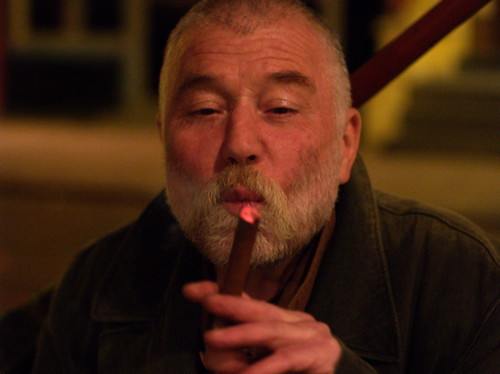
“The trauma of my generation was what our fathers had done to the rest of the world, and so we said, ‘never again,’ and that was the whole impetus through all my life, and it still is.” ~ Brötzmann (2018)
Musician attrition and demise are dispiriting aspects of every annum, but the departure of four disparate octogenarian reedists exacted an especially steep emotional and cultural toll this year. Shorter and Jordan passed away in March, each of them leaving a rich legacy as indefatigable improviser and altruistic educator that continue influence and inspire. Brötzmann exited in June after the return of a protracted respiratory illness. Few if any can match the magnitude of his mileage and six-decade itinerary as an irrepressible, obstinately adventurous world traveler. Gayle ascended in September, an ardent, uncompromising eremite to the end. All four men left behind discographies and concert/interview footage that will leave the faithful and curious listening and marveling in perpetuity, but their collective absence still aches.
Kirk Knuffke & Joe McPhee Quartet + 1 – Keep the Dream Up (Fundacja Sluchaj)
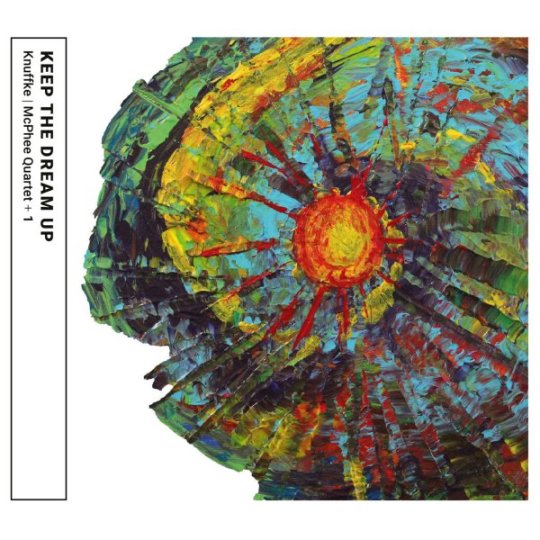
One of the manifold joys of following the output of Kirk Knuffke is anticipating who he’ll collaborate with next. The cornetist’s ears and imagination are as huge as his heart, a trait he has in common with the equally equanimous Joe McPhee. They’ve known each other for years but Keep the Dream Up is their first released collaboration and it’s an affirming alloy of their complementary creative temperaments. Longtime McPhee comrades Michael Bisio and Jay Rosen complete the quartet with bass clarinetist Christof Knoche comprising the additive on a Brooklyn studio session that captures collective creative lightning in a digital bottle. My album of the year for these reasons and more, although hopefully Joe will bring his brass to a follow-up conclave soon.
Don Byas – Classic Sessions 1944-1946 (Mosaic)
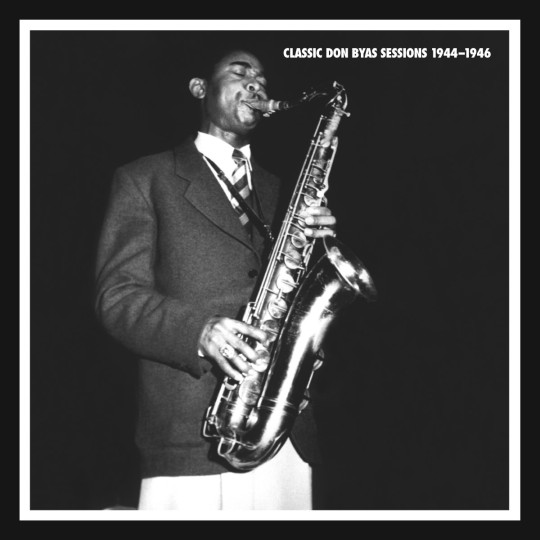
Saxophonist Don Byas recorded prolifically during the 1940s. His porous sound and popular style bridged the schools of swing and bop through prowess and panache aligned with the most esteemed of post-WII tone scientists. That sustained industriousness hasn’t reflected in reliable access to his works, primarily because they’re spread across a plethora of independent labels and competing copyrights. Leave it to Mosaic Records to rectify the longstanding reissue lacuna. This long gestating collection corrals and sequences the bulk of them across ten discs, scrubbing their sound, and adding an expansive cache of rarified verité concert recordings made in a Swedish jazz fan’s residence. Indulging in one’s Byas bias has never been easier or as edifying.
Fred Anderson – The Milwaukee Tapes Vol. 2 (Corbett vs Dempsey)
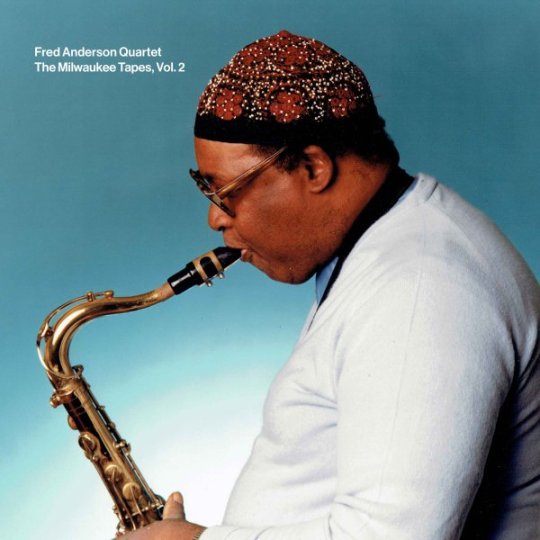
Patience and long-game aptitude are among music producer/archivist/advocate John Corbett’s virtues. This unexpected, but abundantly welcome sequel to an archival Anderson collection on Corbett’s long defunct Unheard Music Series took 23 years to secure commercial circulation and offers an additional hour-plus from the same gig in improved sound. Fellow AACMers Billy Brimfield and Hamid (nee Hank) Drake join bassist Larry Hayrod in bringing vibrant, detailed life to the Lone Prophet of the Prairie’s (as Anderson was affectionately known) serpentine, cerulean melodies. Corbett’s current label released a plenitude of music in 2023 (see also below) but the uncommon opportunity to hear more Anderson of any vintage makes this release worthy of independent mention.
Jason Adasiewicz
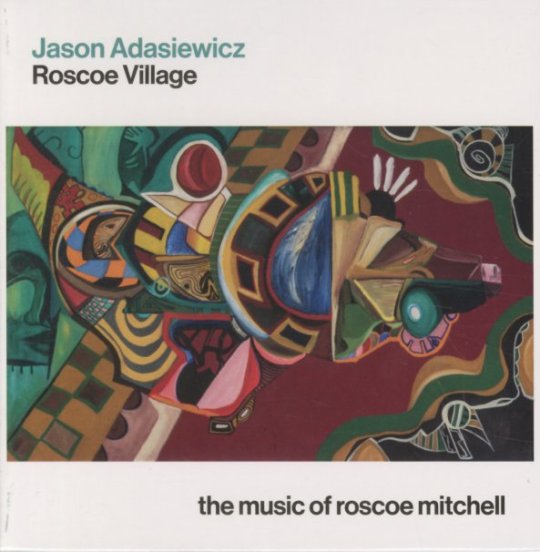
Corbett vs. Dempsey also had a welcome role in Jason Adasiewicz’s return to record with two different projects. On vinyl, Roy’s World documents a 2017 Chicago studio session by the vibraphonist’s quintet originally intended as the soundtrack to a film based on neo-noir novelist Barry Gifford’s short stories. Chicago stalwarts Josh Berman, Joshua Abrams, Hamid Drake, join saxophonist Jonathan Doyle in the ensemble for a program that sounds at once fresh and nostalgic while always vital. On CD, Roscoe’s Village dispenses with band for a solo selective foray through the songbook of Roscoe Mitchell including evocative renderings of “Congliptious” and “A Jackson in Your House” that retain the composer’s essence while striking out in bold new directions.
Natural Information Society
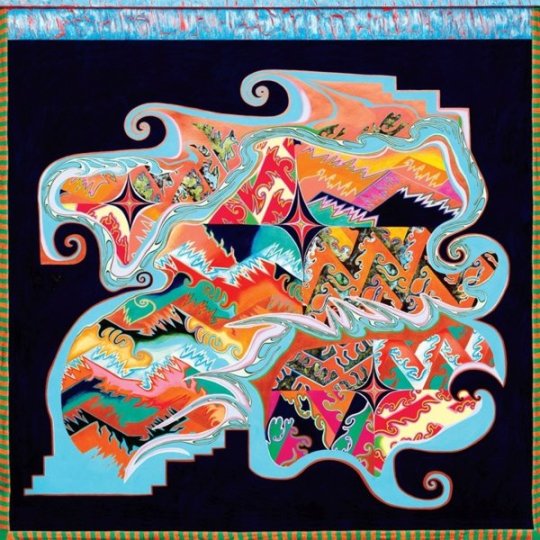
Grounded as it is in core voices of guembri, frame drum and harmonium, codification of Josh Abrams’ NIS as a jazz ensemble immediately feels reductively incomplete. All participating instruments can be active architects in the undulating, melody-laced drones that frequently form the basis of the band’s gradual, granulated improvisations. Performances are more akin to collective expeditions where a galvanizing gestalt effect is afoot; one where earned communal peaks preserve the individual power and agency of the interlocking parts. Since Time is Gravity augments this already catalytic template by incorporating a larger contingent of Chicago colleagues including tenorist Ari Brown to the equation.
Abdul Wadud
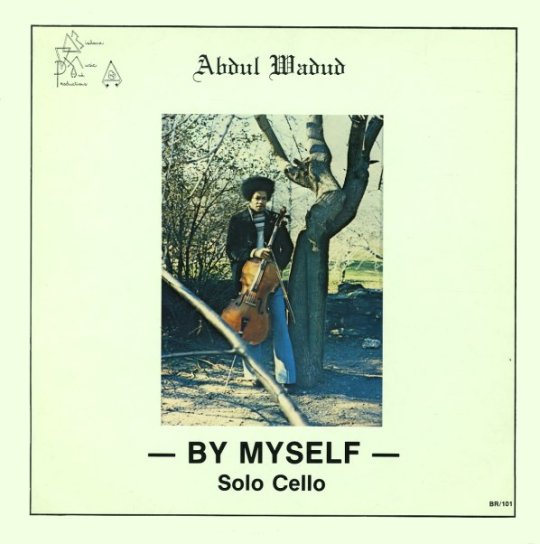
A jazz-based improviser on the cello who didn’t double on other stringed instruments, Wadud was also a consummate collaborator and sideman. Magnanimity in lending his substantial talents to the projects of others resulted in a paucity of albums under his own name. By Myself from 1977 on the Bisharra label is a revelatory anomaly on that self-effacing resume. Wadud approaches the instrument as a multifaceted sound factory, plucking, strumming, and bowing, often simultaneously, to create solo tone poems steeped in personal poignancy. Gotta Groove’s vinyl reissue is a beautiful facsimile of the original album object in faithfully reconstructed fidelity.
Marion Brown
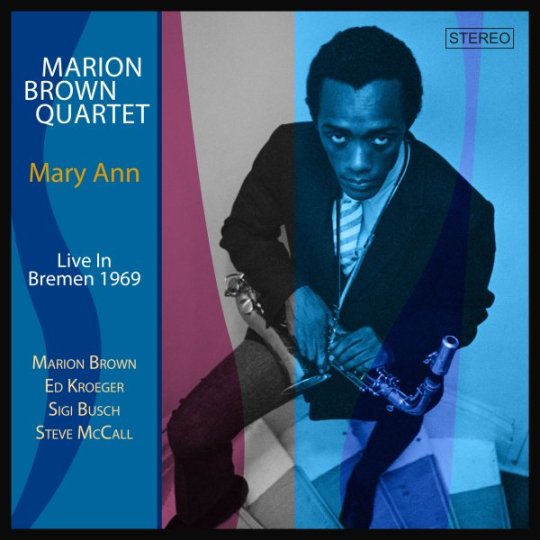
Georgia-born altoist Marion Brown had a lengthy, storied career but the body of recorded work that he left behind can present difficulties in terms of ingress to its totality. Scattered across labels, years, and circumstances, much of it is either out of print or commercially unreleased. That collective relative obscurity makes a trio of releases, two on the German Moosicus label, and a third Record Store Day viny reissue of Brown’s 1970 studio duets with Wadada Leo Smith under the shared sobriquet Creative Improvisation Ensemble even more valuable. Of the former two, Mary Ann presents concert material by Brown’s quartet from a 1969 Bremen club gig in soundboard fidelity. Gesprächsfetzen & In Sommerhausen combines two more German concert snapshots, quintet, and sextet, from 1968 & 1969 with Gunter Hampel originally released on the Calig imprint. Steve McCall is a boon on drums in all three contexts.
Art Pepper – Complete Maiden Voyage Recordings (Omnivore)
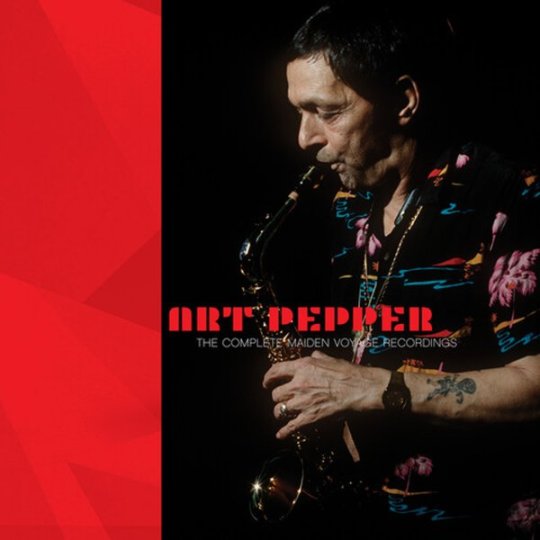
Art Pepper was an inveterate rake for most of his life, magnifying destructive interpersonal tendencies with drugs and frustratingly frequent acts of self-sabotage. That star-crossed propensity makes the fact that he left so much magnificent music even more miraculous. This lavish box is a fascinating compendium of the constantly competing artistic contradictions at his center, collecting a quartet gig across three nights and seven club sets in Pepper’s native Los Angeles, ten months prior to his premature passing at 56. Over half of the music is previously unreleased and the rhythm section, led by the impeccable and implacable pianistics of George Cables, gives Pepper a cumulative confidence boost that keeps him on the rails. None of it has ever sounded better.
Pan Afrikan People’s Arkestra

Los Angeles of the late-1970s was an unforgiving environment for the economic necessities of orchestral jazz. The Pan Afrikan People’s Arkestra, under the nominal leadership of pianist/composer/community organizer Horace Tapscott, was a tenaciously subversive force in the face of that ruinous rule. Adopting the Immanuel United Church of Christ as an informal base of operations, the large ensemble resourcefully engaged in an ambitious series of concerts in 1979. The Nimbus label, long a Tapscott exponent and repository, released the first three entries this year in an archival subscription series collecting the voluminous results. Titles are also available individually and present the pivotal band at a performative peak with star soloists Sabir Mateen, Billy Harris, Jesse Sharps, and Robert Miranda shining just as bright as their fearless foreman.
Alan Skidmore – A Supreme Love
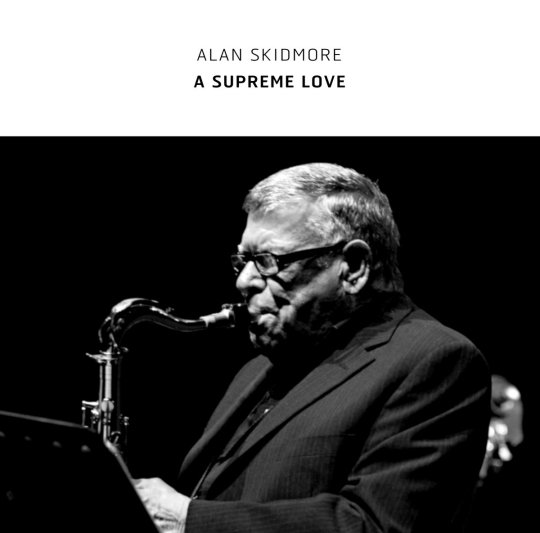
Unexpectedly issued on Mark Wastell’s Confront label, an imprint better known for its fealty to free improvisation, this six-disc archival tribute to Alan Skidmore’s 70+ year career in music launches with the saxophonist’s 1961 radio debut and lands some seven-hours later with his intimate 2019 rendering of John Coltrane’s “Psalm.” The aural expanse between is brimming with bright moments and luminary collaborators the likes of which include Tony Oxley, Kenny Wheeler, Wayne Shorter, Dave Holland, Mike Osborne, Elvin Jones, and another dozen name drops from the top tier of improvised music. It’s a wild, illuminating ride and a sterling example of a musical memorial done right.
The Jazz Doctors – Intensive Care/Prescriptions Filled: The Billy Bang Quartet Sessions 1983/1984 (Cadillac)

Billy Bang and Frank Lowe shared a bottomless fraternal bond forged through parallel traumas internalized in Vietnam and expressed by the subsequent embrace of the restorative power of improvised music. The pair of sessions (one reissued, one archival) collected on this disc epitomize their deep attachment arguably as well as any of their other numerous collaborations. Outside the cardinal duo, the Jazz Doctors never really had a stable lineup, but the quartets here embody two of their best. Both programs are loosely adherent to freebop conventions with violin and tenor saxophone combining over contrabass and drums for a potent front line. Bang and Lowe are long gone now, their shared absence making the availability of this music even more precious.
Attila Zoller & Jimmy Raney
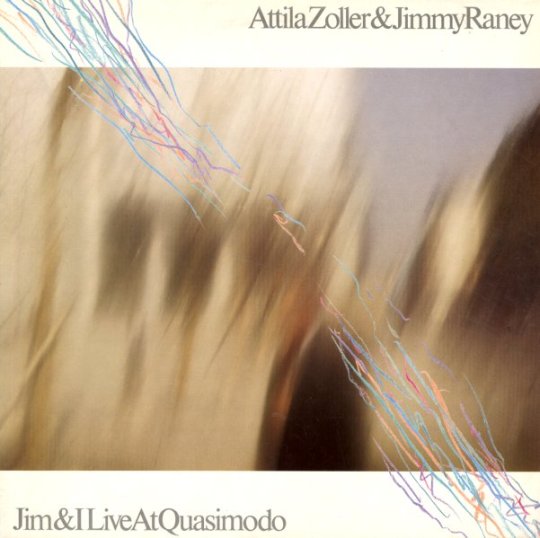
Hungarian guitarist Attila Zoller had selective affinity for other artists on the instrument, so much so that his mid-career period is seeded by fateful encounters with plectrist peers. Most prolific among these partnerships was his prudent pairing with Jimmy Raney. A popular proponent of bop-based jazz, Raney was in a similar exploratory headspace when the two joined forces on a trio of recordings for the German L + R label over a seven-year span. Concert dates from Frankfurt (’80) and Berlin (’86) find the duo spooling out lengthy dialogues that dabble in free improvisation while keeping codified melodies within reach. An earlier New York encounter (’79) explores their rapport in a studio. All three reissues on the Japanese Ultra-Vybe imprint are aces.
Steve Swell’s Fire Into Music
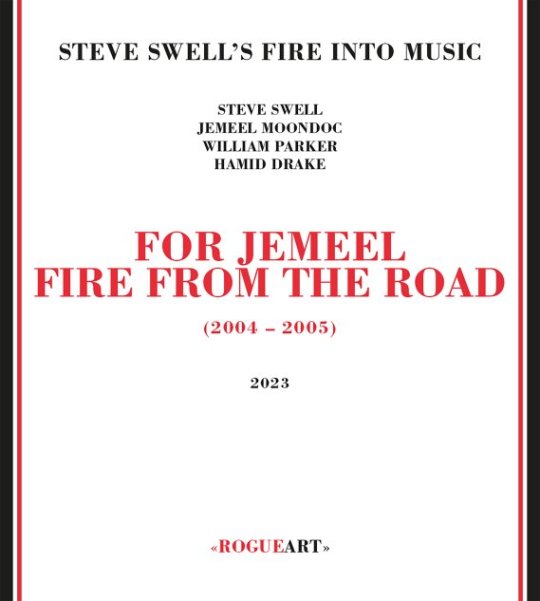
Simultaneously emblematic of NYC free jazz in the early aughts and fiercely dedicated to resisting pitfalls of provincialism by touring generously and rigorously, trombonist Steve Swell’s Fire into Music was one of the finest quartets of its kind. Posthumously dedicated to the late altoist Moondoc, this three CD set collects a trio of small venue concerts by the band from gigs in Texas and Ontario. As with the horns, William Parker and Hamid Drake are ideally suited to the extended, expository freebop safaris that formed the ensemble’s flexible repertoire. Swell’s the leader on paper but sagely embraces musical communalism without fail.
Intakt

Running a physical media imprint in the 21st century is an inherently parlous enterprise, but this steadfast Swiss label continues to evidence how it’s done. This year’s standout catalog entries include Andrew Cyrille’s Music Delivery/Percussion, the octogenarian drummer’s third solo album and first in 45-years; bassist Jöelle Leandré’s solo Zurich Concert; pianist Aruán Ortiz’s Serranías Sketchbook for Piano Trio; Beyond Dragons by the trio of saxophonist Angelika Niescier, cellist Tomeka Reid, and drummer Savannah Harris, and Ohad Talmor’s Back to the Land, a quartet-plus-guests survey that takes its compositional focus an archival workshop date by Ornette Coleman and Lee Konitz.
Ezz-thetics
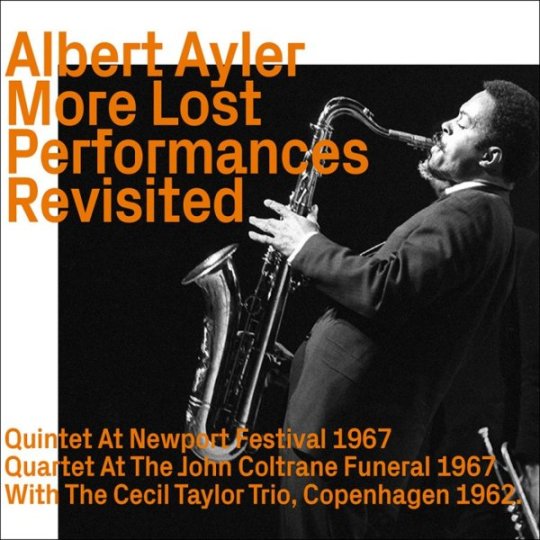
The appearance of the Swiss Ezz-thetics imprint four years ago raised both eyebrows and ire. Lacking access to master tapes, veteran free jazz and new music producer Werner Uehlinger sourced commercially released editions instead, employing ace audio engineer Peter Pfister succeeded by Michael Brandli to rejuvenate and refurbish the recordings, stateside copyright considerations be damned. Reaction was expeditious and polemical, but proof is in the hearing as most of the label’s dozens of releases sound better than their original incarnations. Catalog highlights this year include another round of Albert Ayler airshots including his pivotal meeting with the Cecil Tayor Trio in 1962 on More Lost Performances, Charles Mingus’ At Antibes 1960, and Ornette Coleman’s At the Golden Circle.
Fresh Sound
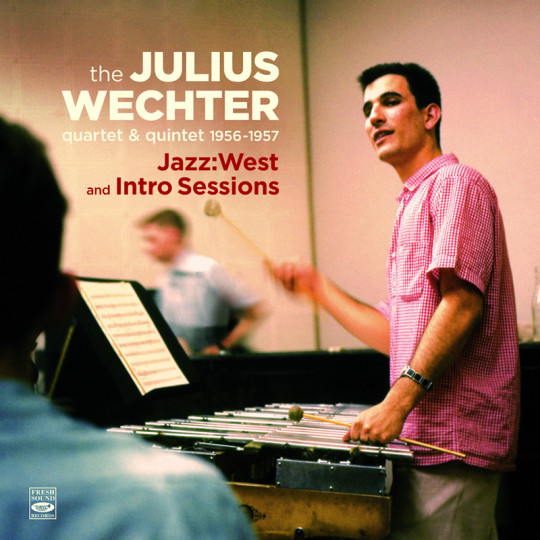
Jordi Pujol is akin to Uehlinger in that he refuses to let his vision and ambitions as a producer be abbreviated by external opinion. In Pujol’s case it’s yielded a bountiful inventory of antiquarian titles that rights holders have shown little to zero interest in restoring to begin with. Cases in point for this year include a definitive collection of obscurando saxophonist Boots Mussulli’s works; concert and studio collections by the Count Basie alumni tandem of Al Grey and Billy Mitchell; hens’ teeth rare leader sessions by Arthur Lyman vibraphonist Julius Wechter; and a two-fer of Julliard-trained Ellingtonian Cass Harrison piano trio albums. Exciting guilty pleasures all around.
Playing for the Man at the Door

As complex as he was controversial, Robert “Mack” McCormick deserves consideration in the esteemed company of other maverick cultural archivists like Alan Lomax, George Mitchell, and Harry Smith. With a preservationist purview mostly comprising Texas and bordering states, McCormick spent much of his adult life obsessively documenting and disentangling the cultural capital of the region through recordings, photography, interviews, essays, and research. Smithsonian Folkways became repository for the massive reservoir after his passing and this box is the first in what will hopefully be multiple dispatches from the same. Unreleased field recordings of Mance Lipscomb and Lightnin’ Hopkins represent the big names, but works by the likes of Hop Wilson, Cedell Davis, Robert Shaw, and a handful of others are just as persuasive. Bongo Joe Coleman’s impassioned presidential pitch closing the set will have listeners pining for a time when third party Executive Branch candidacy didn’t seem so fraught.
Joni Mitchell Archives - Vol. 3, The Asylum Years 1972 to 1975
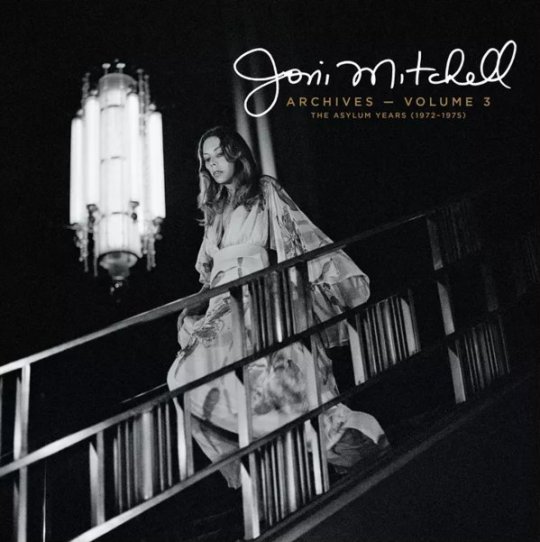
Mitchell’s continuing project corollary to her old friend Neil Young’s analogously exhaustive retrospective enterprise, this third entry in the series finds her 30-something-self further broadening the lens of her art beyond the solo concert music that dominated the first two boxes. There are stirring solitary shows here, too, but it’s the band offerings that prove most revealing, particularly in the company of reedist Tom Scott’s fusion group L.A. Express. James Taylor, Graham Nash, and David Crosby lend contributory hands, and there’s a brief but intriguing collaboration with Young alongside a trove of demos and workshop versions of songs from her first three albums for Asylum.
Martin Davidson

In closing, another memorial. Martin Davidson wasn’t a musician, but European free improvisation as an art and archive would be a fraction of what it is without his copious and enduring work. As steadfast proprietor of the Emanem label he put his resources into musicians whose efforts frequently fell outside the probability of consistent commercial remuneration. Under his aegis, influential improvisers like Steve Lacy, Derek Bailey, Evan Parker, and Paul Rutherford gained robust catalogs alongside other aspiring artists who never garnered even niche cachet. Davidson was a curmudgeon and an anachronism, trusting his ears implicitly, suffering the indignities of inquiries from strangers seeking audience with the hip hop icon who shared the phonetics of his imprint’s name, and advancing the pleasures of physical media well past their purported expiration date. He was also a talented writer, adding invaluable context to his releases through first-person testimony and critique. Martin will be missed.
And as is tradition in this 20th iteration of this year-end exercise, 25 more titles in stochastic order. Thanks to all for reading, and gratitude to Jennifer Kelly for providing the forum and formatting.
Rodrigo Amado’s The Bridge – Beyond the Margins (Trost)
James Brandon Lewis – For Mahalia with Love (Tao Forms)
Henry Threadgill – The Other One (Pi)
Guillermo Gregorio – Two Trios (ESP)
Rob Brown – Oceanic (RogueArt)
Rich Halley Quintet – Fire Within (Pine Eagle)
Milford Graves w/ Arthur Doyle & Hugh Glover – Children of the Forest (Black Editions)
Mike Osborne – Starting Fires: Live at the 100 Club 1970 (British Progressive Jazz)
Jim Hall – Uniquities Vol 1 + 2 (ArtistShare)
Madhuvanti Pal – The Holy Mother (Sublime Frequencies)
V/A – On the Honky Tonk Highway with Augie Meyers & the Texas Re-Cord Company (Bear Family)
Mal Waldron & Terumasa Hino – Reminiscent Suite (Victor/BBE)
Oum Kalsoum – L’Astre D’Orient 1926-1937 (Fremeaux & Associates)
Sonny Rollins w/ the Heikki Sarmanto Trio – Live at Finlandia Hall Helsinki 1972 (Svart)
V/A – Equatoriana: El Universo Paralelo de Polibio Mayorga (Analog Africa)
Evan Parker – NYC 1978 (Relative Pitch)
V/A – If There’s a Hell Below (Numero Group)
John Coltrane – Evenings at the Village Gate (Impulse)
Derek Bailey & Paul Motian – Duo in Concert (Frozen Reeds)
Peter Brötzmann/Fred Van Hove/Han Bennink/Albert Mangelsdorff – Outspan 1 & 2 (FMP/Cien Fuegos)
Hasaan Ibn Ali – Reaching for the Stars: Trios/Duos/Solos (Omnivore)
Mark Dresser – Tines of Change (Pyroclastic)
Steve Millhouse – The Unwinding (Steeplechase)
Myra Melford’s Fire and Water Quintet – Hear the Light Singing (RogueArt)
V/A – Destination Desert: 33 Oriental Rock & Roll Treasures (Bear Family)
#dusted magazine#derek taylor#yearend 2023#Peter Brötzmann#Wayne Shorter#jazz#kidd jordan#charles gayle#kirk knuffle#joe mcphee#don byas#fred anderson#Jason Adasiewicz#natural information society#Abdul Wadud#marion brown#art pepper#Pan Afrikan People’s Arkestra#Alan Skidmore#The jazz doctors#Attila Zoller & Jimmy Raney
15 notes
·
View notes
Text
“Why do you keep posting that picture of Ray Toro with Gonzo from The Muppets? Why do you keep posting that video of Gerard Way talking about the film Labyrinth? Are there any videos?” And other questions, answered.
A bit of background:
In 2016, the Center for Puppetry Arts and the Jim Henson Company co-hosted the first Puppets for Puppetry benefit event in order to support the non-profit organization, the Center for Puppetry Arts. The CPA is the largest organization in the United States dedicated to puppetry, and contains the worlds largest collection of artifacts from the Jim Henson Company, as well as one of the largest collections of puppets and puppetry materials in the world.
The inaugural Puppets for Puppetry event fell on what would have been Jim Henson’s 80th birthday, and served to honor and highlight the life and contributions of Dave Goelz, a core member of Henson’s team since being hired on as a part-time puppet builder in 1973. Since then, Goelz has gone onto perform various characters, most notably originating daredevil, performer, and chicken-lover, Gonzo the Great, who he still performs to this day. Goelz also performs such characters as the scientist Dr. Bunsen Honeydew, the easygoing saxophonist Zoot, the depressed and cautious Boober Fraggle, the adventurous and proud Uncle Traveling Matt, and was a puppeteer of the small and hot-headed Sir Didymus. It’s easy to see from this resume why he was the first choice for the first ever Puppets for Puppetry event.
But, where the hell does My Chemical Romance fall into this?
Another aspect of this event was that it also served to celebrate the 30th anniversary of Jim Henson’s cult classic film, Labyrinth, which also happens to be the film that features Sir Didymus. The musical guests invited to perform the tribute to Labyrinth were Gerard Way and Ray Toro, joined by Jarrod Alexander, Matt Gurney, and Jamie Muhoberac.
Midway through the show, they performed a medley of the songs from Labyrinth, including “Underground” and “As The World Falls Down.” Considering that Gerard has stated that Labyrinth is one of his favorite movies, and that the Jim Henson Company is one of his favorite “creative collectives,” this performance should come as no surprise. Dan Garza, one of the puppeteers at the event, confirmed this year on Twitter that Ray also provided guitar backing for the finale, a performance by Dave Goelz and various puppeteers at the event of “I’m Going to Go Back There Someday,” Gonzo’s song from the first Muppet Movie.
Wow, this is great! I sure hope there’s videos!
It’s complicated. While there are a few clips of the cover of “Underground” floating online (HERE and HERE) and one of Ray performing “Helena” with a young fan, the event was meant to be recording-free since it was a benefit concert. There are rumors of a longer video existing at some point, and a very glitchy AltPress page with dead video links, but other than that... nothing. I have personally emailed the Center for Puppetry Arts, the Jim Henson Legacy, and the Jim Henson Company in an attempt to dig out any other videos, but have come up with nothing. If there are longer videos out there, I haven’t been able to find them.
Photo Credits from the Jim Henson Company, illustration by Noah Ginex at ToughPigs.



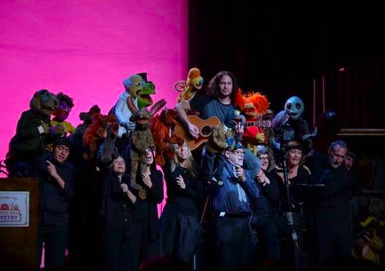
#my chemical romance#the muppets#puppets for puppetry#dave goelz#gerard way#ray toro#mcr#my chem#gonzo the great
213 notes
·
View notes
Text
Reminiscing Music Memories
Earlier today I posted Kyteman as I met one of my former students by chance today. When he did his final exam on the music school, meaning he studied 8 years with me as a teacher and I was (humbly) a contributing part of him growing up, Kyteman and his orchestra was very popular in the Netherlands (and I think in some more European countries as well). His biggest hit was 'Sorry' (the music piece I posted). It inspired many young people to start playing an instrument. Kyteman being a trumpet/flugelhorn player, the trumpet teacher at my music school saw his class increase immensely.
I had the same experience when Candy Dulfer got popular, being the daughter of another known saxophonist (Hans Dulfer) she played a part in the song 'Partyman' of Prince, there's even a sentence in the lyrics "When I want sax, I call Candy".
Her biggest succes was the song 'Lily was here', a duet with Dave Stewart, guitarist from the Eurythmics.
youtube
It was always a joy for us music teachers whenever such an instrumental hit came along and inspired young people to choose an instrument to learn to play. Though a challenge as well, as most of them couldn't await to be able to play that hit, it involves a lot of study and practicing. Keeping them interested and dedicated became more and more a challenge over the years.
In the Netherlands music isn't really part of the basic education. Despite many programs today to get music into the school, it still is a poor relation. Even though it is a fact that music ignites all areas of child development and skills for school readiness, particularly in the areas of language acquisition and reading skills. Learning to play a musical instrument can improve mathematical learning, and even increases school scores.
I remember once I had a student completing all 8 years as well. In between the rehearsals for his final exam and the concert later on, we went for a walk to relax a bit and get an ice cream. on our way back to the music school we came along a coffeeshop. (a coffeeshop in the Netherlands is not where you drink coffee 😉). My student nodded his head towards the entrance and said to me 'I'm glad I didn't chose that door but instead your door'. I smiled... I never forgot this. In one small sentence he nailed the essence of music or creative education, and I felt his gratitude for keeping him dedicated.
A great example how music education can contribute to society is the Venezuelan music project called El Sistema founded in Venezuela in 1975 by Venezuelan educator, musician, and activist José Antonio Abreu. It later adopted the motto "Music for Social Change." El Sistema-inspired programs provide what the International Journal of Applied Psychoanalytic Studies describes as "free classical music education that promotes human opportunity and development for impoverished children.
One of the students that grew up in this project is the now world famous conductor Gustavo Dudamel. He’s seen firsthand the ways that providing young students with the means of making and understanding music can transform lives. “When you give an instrument to a young person that doesn’t have any hope,” he says, “you’re giving a world of possibilities.”
youtube
It's hard to make a choice from the many videos that are shared on Youtube of an incredible NYE concert in Caracas to the Night of the Proms. Just search Gustavo Dudamel on Youtube
This one however shows the inspiration, fun or as one in the comments says: 'HOLY SHIT i've never seen an audience get so excited over an orchestra performance and i wanna be there, this is so fun and energetic'
youtube
If you like to see/listen to more just search Gustavo Dudamel on Youtube and you will find many pearls to cheer up your day. I personally would recommend Shostakovich's Symphony No. 10, 2nd movement, and Arturo Márquez' Danzón No. 2. But there is so much more to enjoy!
Anyway, there was nothing to be 'sorry' about for catching up with my former student today over a cup of coffee. On the contrary, it totally made my day going from Kyteman to Candy and Dudamel! 🎶
14 notes
·
View notes
Text


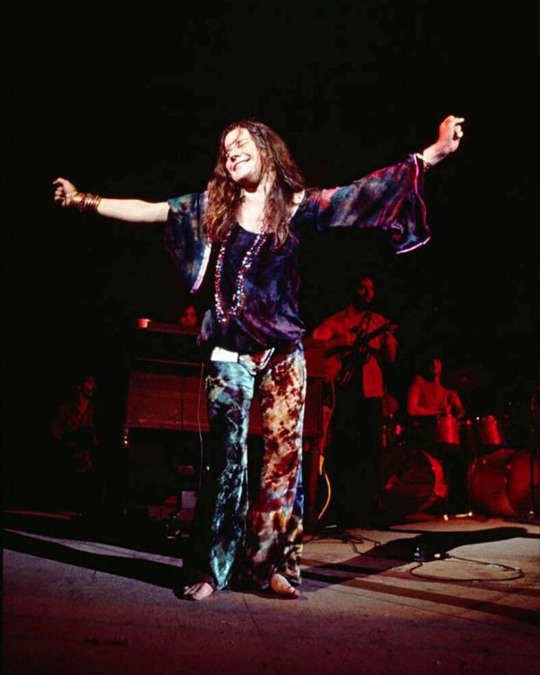
Born on this Day: The iconic Janis Joplin (#Bi2).
In the early hours, between midnight and dawn, on Sunday, August 17, 1969, Janis Joplin took to the stage, marking a historic moment during the three-day Woodstock Music and Art Fair in Bethel, New York. Draped in her signature long-sleeved tie-dyed outfit, this performance held special significance as it was Joplin's first major solo act after parting ways with her band, Big Brother & The Holding Company, a year earlier following the release of their album "Cheap Thrills".
Facing an unexpectedly massive crowd, Joplin fearlessly entertained with a mix of new songs, covers, and beloved Big Brother favorites. While initially criticized for departing from her iconic performances with Big Brother (notably at the 1967 Monterey Pop Festival), Joplin's Woodstock show secured her place in rock history.
Joplin asked the audience in the dark, "How are you guys out there? You're staying stoned and you got enough water and you got a place to sleep and everything? Because all of us — and I don't mean to be preachy — but we oughta remember, and that means promoters too, that music's for grooving, man, and music's not for putting yourself through bad changes. You don't have to take anybody's shit, man, just to enjoy music."
Joplin kicked off her performance with a spirited rendition of Eddie Floyd's "Raise Your Hand," backed by the Kozmic Blues Band. This lineup included guitarist John Till, keyboardist Richard Kermode, bassist Brad Campbell, drummer Maury Baker, along with Terry Clements on tenor saxophone, Luis Gasca on trumpet, and Cornelius "Snooky" Flowers on baritone saxophone.
The band introduced their first new track, "As Good As You've Been To This World", from Joplin's upcoming 1969 debut album "I Got Dem Ol' Kozmic Blues Again Mama!" Transitioning to a mellower groove, Joplin delivered a soulful rendition of the Bee Gees' hit "To Love Somebody", also featured on her "new" album, followed by a sultry interpretation of George and Ira Gershwin's classic standard "Summertime", previously covered on "Cheap Thrills".
Joplin poured her heart into the 11-song set, pushing her vocal limits. She regained the energy with two more new songs, "Try (Just A Little Bit Harder)" and the heartfelt ballad "Kozmic Blues".
Tenor saxophonist Snooky Flowers joined in for a spirited rendition of Otis Redding's 1965 hit "Can't Turn You Loose" before the set's grand finale, "Work Me, Lord", a Nick Gravenites composition that Joplin belted out until her voice could carry no more.
Encouraged by the roaring audience, Joplin returned to the stage, concluding her Woodstock performance with two tracks from "Cheap Thrills." These songs were her iconic hit "Piece Of My Heart" and a fervent cover of Big Mama Thornton's "Ball And Chain", delivering every ounce of herself to the enthralled crowd.
☮️: https://bi.org/en/famous/janis-joplin
#janis joplin#woodstock#woodstock 1969#woodstock festival#60s rock#bisexuality#bi#queer#lgbtq#lgbtqia#bi pride#bi visibility#lgbt#bivisibility#classic rock#hippie#free love#peace#flower child#bisexual women#bi women#bisexual woman#bi woman#bisexual#representationmatters#music history#historic moment#lgbt history#queer history
17 notes
·
View notes